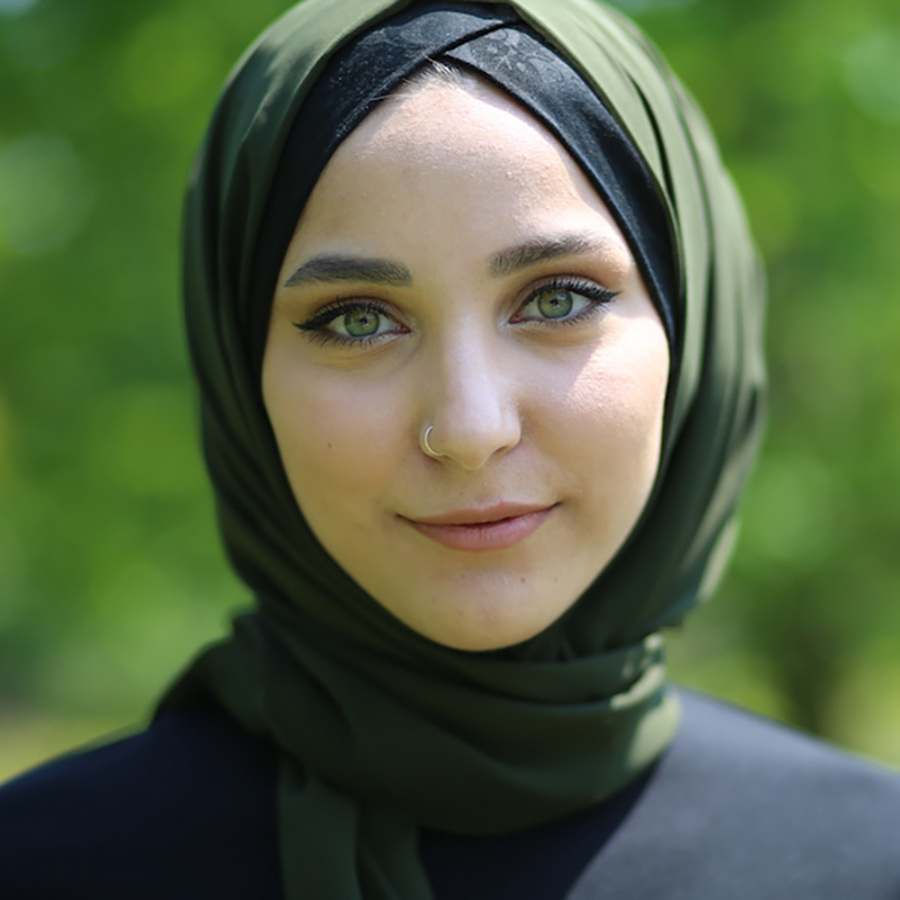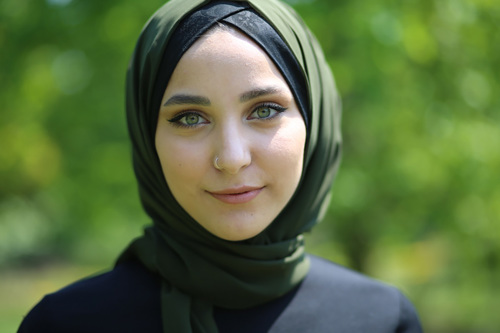
Why do eyes sometimes appear to change color?
July 7, 2004

- Related Topics:
- Eye color,
- Complex traits,
- Environmental influence,
- Pigmentation traits
Curious readers ask:
“My eyes were medium brown when I was younger, but a while after I hit puberty they changed color slightly. They are now a really dark brown-hazel. Mostly, they stay a slightly greenish brown, but occasionally, they go to a bluish brown-green or a really dark brown-green. Why is this?
– A curious adult
My mother's eyes are dark brown, but my father's eyes are hazel. They sometimes change color from light blue to bluish green to dark blue, etc., depending on what he's wearing. Why do hazel eyes seem to change color?
– A curious adult from North Carolina
I had clear blue eyes until I was about 7 years old. One morning before I left for school, my mother noticed that my eyes were a clear emerald green. The change must have occurred fairly quickly for it not to have been noted as it happened. My red-haired father had brown-with-slight-orange-tint eyes and my brown-haired mother had darkish, muddy-blue eyes. How/why did my eye color change? I don't know anyone else whose eyes changed color after the baby months.
– A high school student from Indiana”
It is amazing the number of questions out there about eye color. Eye color is taught as this wonderfully simple genetic trait and then almost everyone quickly comes up with all sorts of exceptions.
The bottom line is that the types of changes you all describe are widely reported. For example, in one study, 15% of Caucasians had some lightening or darkening in eye color at puberty.1 In fact, this study showed there was probably some unknown gene or genes involved in the eye color change.
And it’s also pretty common for eye color to appear to change more often, perhaps looking darker one day and lighter the next. This is often due to lighting conditions, what you’re wearing, and other things that just affect how people perceive the color.
What is surprising to me is that eye color doesn't change more often. Eye color is determined by lots of different genes, but it all boils down to how much pigment you have in the front part of your iris at any one time. Lots of pigment means brown eyes, a little bit, blue eyes. Other colors come from intermediate amounts of pigment.
The genes involved in eye color determine how much pigment gets made, how quickly it is degraded and where in your iris to put it. In other words, eye color is an ongoing process that is not necessarily set in stone.
So all that has to happen to change eye color is to change the final amount of pigment in your eye. How could that happen?
Remember, genes are just recipes for proteins. When eye color genes are on, proteins that make and degrade eye color pigment are made. The amount of pigment in your eye is determined by how good these proteins are at their job and how many of these proteins are doing their jobs. For example, you get the same amount of pigment if you make a little bit of a good protein or lots of a mediocre protein.
The most likely explanation for a change in eye color is to change the amount of pigment producing proteins made. There are lots of cases where something in the environment changes the amount of protein that is made.

Now, back to your questions. An eye color change at puberty doesn't seem far fetched considering all the genes that get turned on and off when a child turns into an adult. In fact, maybe the 15% of people whose eyes change color at puberty have an eye color gene that responds to the sex hormones associated with puberty.
As for eyes changing color at various times as an adult, something in the environment could affect one or more of the eye color genes. There are lots of examples of things in the environment influencing how much a gene is turned on. Stress, for example, is known to affect genes important for the immune system.
Not only that, our perception of someone’s eye color can be affected by things like lighting conditions, or even the color of clothing that the person is wearing. In this case their eye color might look quite different, but the pigment in their eyes has not actually changed.
I hope this helped. The bottom line is that eye color is the result of a constant process of pigment creation and destruction. As I was writing this, I began to wonder if most people have small changes in their eye color genes but that it is unnoticeable. For example, my blue eyes are most likely due to defective eye color proteins. So if their expression were changed, there would be no change in eye color. The same probably holds true for dark brown eyes where any changes are too subtle to notice. It may be that only those on the cusp with, for example, hazel color eyes can notice these subtle changes.

Author: Dr. Barry Starr
Barry served as The Tech Geneticist from 2002-2018. He founded Ask-a-Geneticist, answered thousands of questions submitted by people from all around the world, and oversaw and edited all articles published during his tenure. AAG is part of the Stanford at The Tech program, which brings Stanford scientists to The Tech to answer questions for this site, as well as to run science activities with visitors at The Tech Interactive in downtown San Jose.
 Skip Navigation
Skip Navigation
